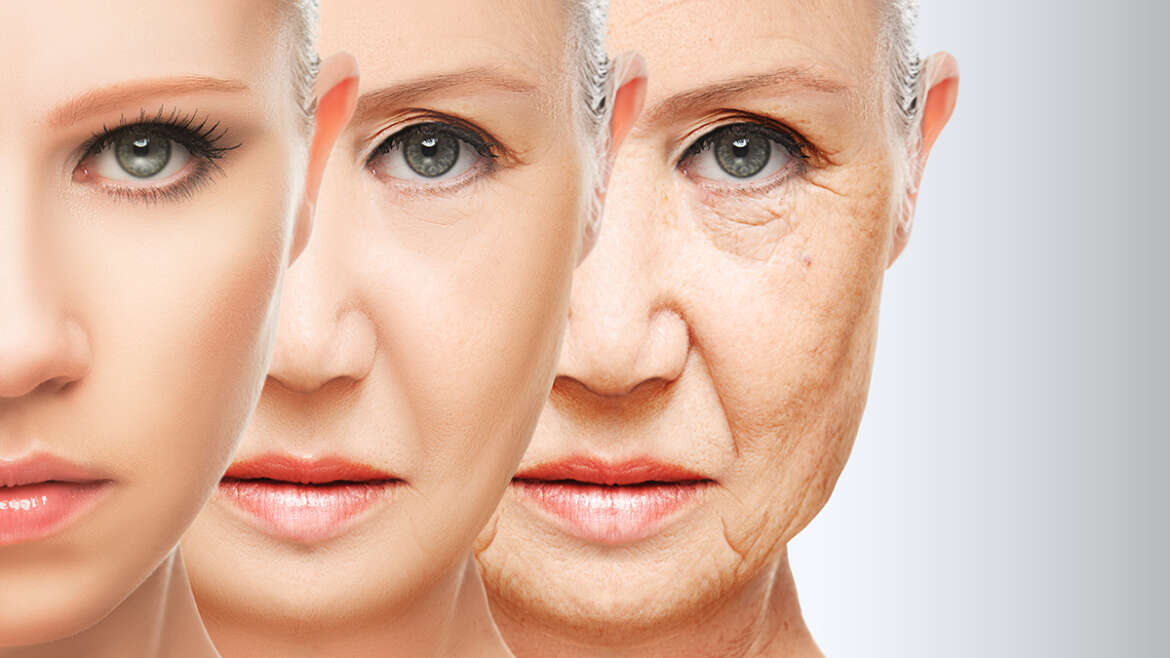How to: Protect Your Collagen to Maintain Your Youth
Skin Aging:
Aged skin appears thin, saggy, and has more texture and fine lines. Besides environmental factors’ contribution, the main culprit of skin aging is a weakening of the scaffolding that holds the skin plump and taunt. The appearance of the outside of the skin largely depends on the strength of the unlying matrix. In the human body, proteins make up the major structural elements of cells. In the skin specifically, the protein collagen is responsible for structural support and maintaining a strong underlying foundation to keep the skin looking taut and smooth.
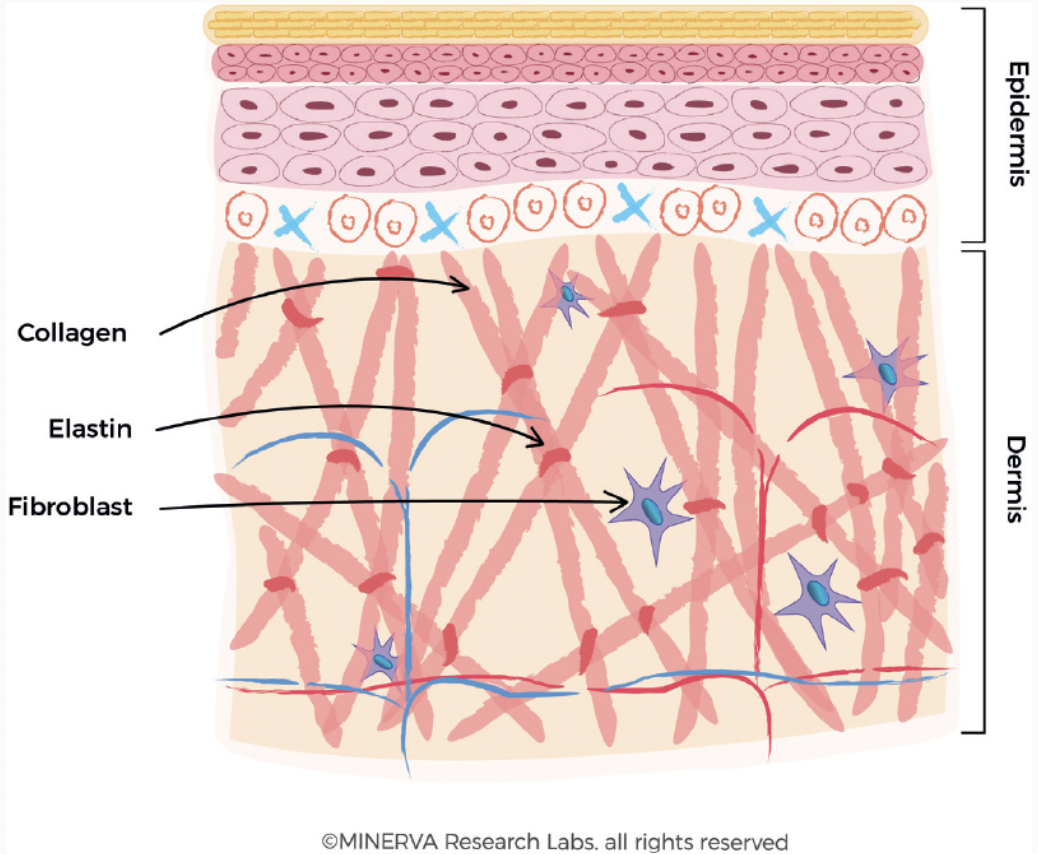
Collagen’s Role in Skin Aging:
Collagen comes in various forms within the body. In the skin, 80-90% of the total collagen is called “Type I”, and 10-20% is Type III. Both types of collagen are produced by cells called fibroblasts, which are located in the skin’s dermal layer. The collagen produced by the fibroblasts creates a matrix that provides structure to the skin. Fibroblasts also produce elastin protein, which allows for stretch and recoil of the skin, as well as glycosaminoglycans (GAGs) which are essential for hydration and moisture.
Maintaining youthful skin depends on how fibroblasts in the dermis are functioning and producing these structural proteins that keep the skin looking taut, voluminous, and smooth. The problem is that in early adulthood, fibroblasts begin to produce less of these structural proteins, resulting in loose, sagging, and wrinkle-prone skin. As we age, Collagen production begins to decline by a rate of 1-1.5% per year. Hormones, genetics, and environmental factors like smoking, UV exposure, and pollution can accelerate this process as well.
The effects of aged skin are not only due to a reduction in collagen production but also the disorganization of existing collagen in the dermis. As collagen density decreases, the structure of the matrix becomes fragile and weak. This, on top of the natural decline of other structural and moisturizing factors (like hyaluronic acid), emphasizes the appearance of aged skin.
When to Start Thinking About Your Collagen:
Collagen peaks between the years of 25-34 years old, and begins to decline by approximately 25% over 4 decades. Hormones can have large effects on the collagen matrix. For women who have gone through menopause, the rate of collagen decline increases to an average of 2.1% per postmenopausal year as estrogen levels begin to decrease as well.
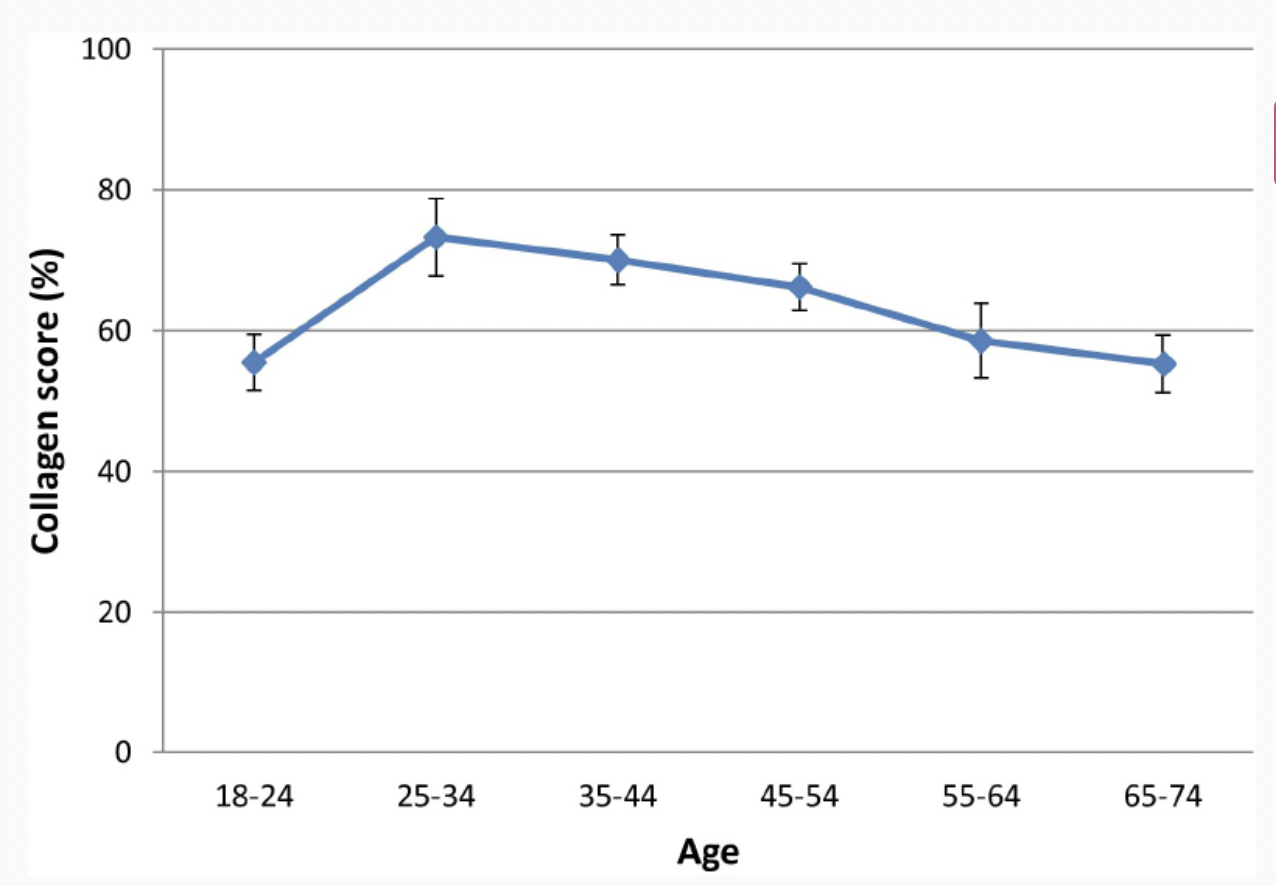
For my younger patients, I recommend starting treatments to maintain collagen synthesis during the “collagen peak” years (mid-20s-30s). The treatments I recommend to these patients are the same that I recommend to my older patients. Instead of trying to make up for lost collagen to reverse symptoms, the goal is to maintain fibroblast activity to promote a lasting, strong dermal matrix.
Patients with noticeable signs of aging may need repeated treatments for maintained results. However, these treatments can have profound, noticeable effects to produce healthier, younger skin.
Treatments for Collagen Maintenance and Younger-looking Skin:
1. SCITON SKINTYTE
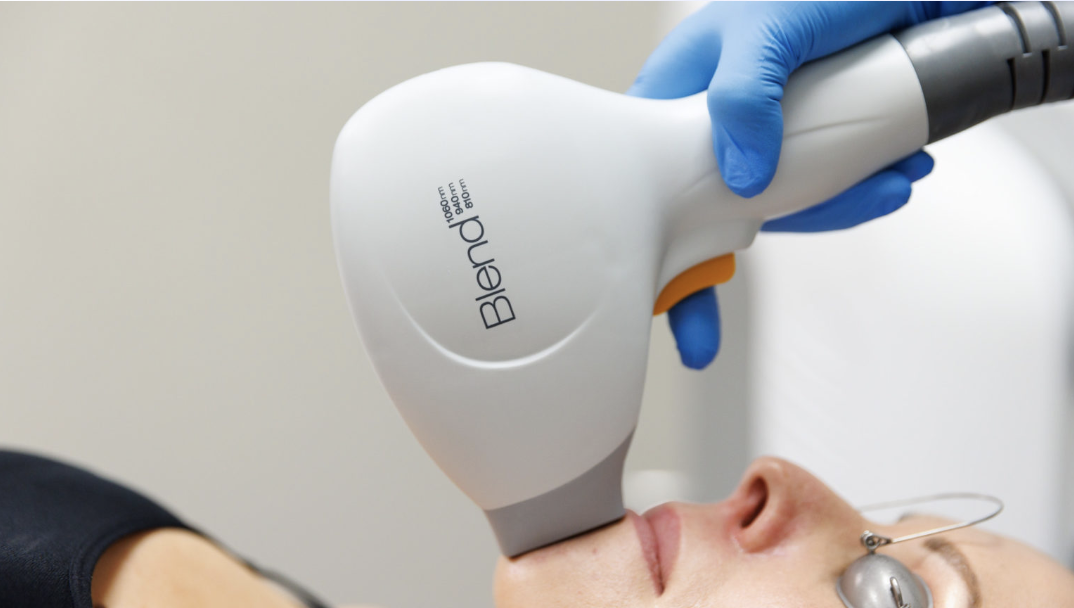
What is it? SkinTyte is a cutting-edge light-based treatment that is changing the field of aesthetic dermatology. SkinTyte by Sciton is non-surgical, painless, and has powerful results to improve the appearance of skin laxity. It gradually firms and tightens the skin to reduce the appearance of fine lines, wrinkles, and sagging skin.
How does it work? This treatment uses infrared light to penetrate into the dermis to stimulate tightening and the production of new collagen. Infrared light is known for its ability to repair the skin and encourage cell growth due to its specific wavelength that reaches fibroblasts in the dermis. While infrared light heats the dermis, the epidermis is protected and left free of pain. The light is delivered in rapid, gentle pulses to contract the collagen fibers, causing them to heat, tighten, and build a stronger scaffolding in the dermis. At the same time, it triggers the body’s natural healing process, causing new collagen to be produced by the fibroblasts simultaneously.
What is the procedure like? The process takes approximately 30 minutes with no downtime afterward so that you can return to work immediately after the procedure. SkinTyte uses a laser that produces a warm feeling but does not require any anesthetic numbing cream.
What are the results? The results are tighter, smoother, and younger-looking skin! The results last 3-12 months after 3-5 treatments in total, although results can be seen within one treatment. Repeated treatments depend on the current condition of your skin, which will be evaluated during your consultation.
Where can this be used? SkinTyte can be used on many areas including the face, neck, abdomen, knees, thighs, butt, and arms. It targets fine lines and wrinkles, loss of elasticity, and sagging skin almost anywhere on the body.
Who is a good candidate? SkinTye by Sciton is suitable for all skin types and tones. Anyone with loose skin can be a candidate for SkinTyte, including those with an aged face or neck, postpartum women, and after liposuction.
2. ULTHERAPY
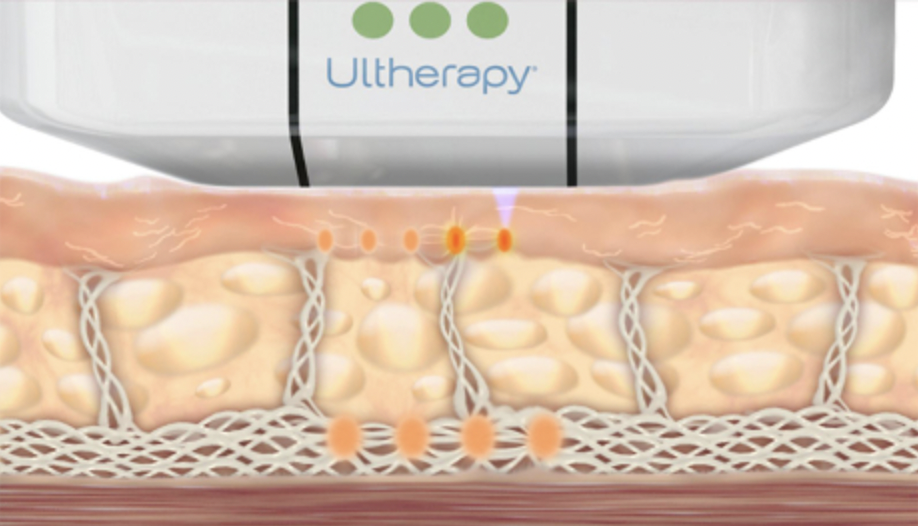
What is it? Ultherapy is ultrasound therapy that helps produce new collagen and elastin in the dermis by stimulating fibroblast cells. It is a non-surgical alternative to a face face-life.
How does it work? The machine’s micro-focused ultrasound is administered to the skin at a specific temperature and depth to target the deep skin and musculature beneath. The generated thermal effect initiates the body’s natural healing response, triggering the fibroblasts to produce new collagen. Unlike laser/light-based treatments or surgery, Ultherapy uses focused imaging of the individual’s unique anatomy for optimal precision.
What is the procedure like? Depending on the client, the Ultherapy treatment can take between 30 to 90 minutes. The procedure can be uncomfortable for some patients, so in our office, we provide topical numbing cream and injections to numb the areas being treated. After the treatment, patients may notice some redness and swelling, although these side effects are short-lasting.
What are the results? Ultherapy improves the appearance of fine lines and wrinkles. Results develop gradually over 2-3 months, and the collagen-building process can continue for up to 6 months. The use of ultrasound visualization allows us as the provider to maximize your results by working with your unique cellular anatomy.
Where can this be used? Ultherapy is used to target the face (including the eyes, lips, and jowls), neck, and upper chest area.
Who is a good candidate? Ideal candidates still have some skin elasticity and moderate concerns about facial aging.
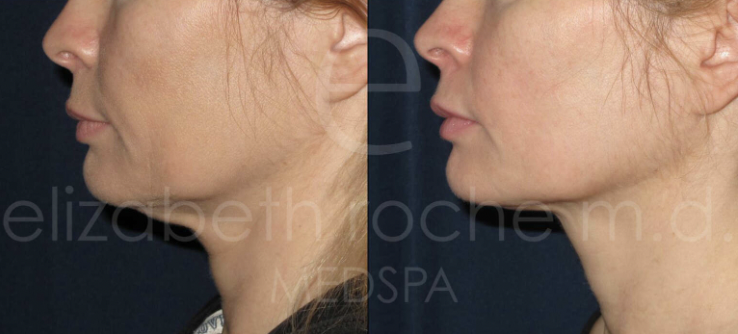
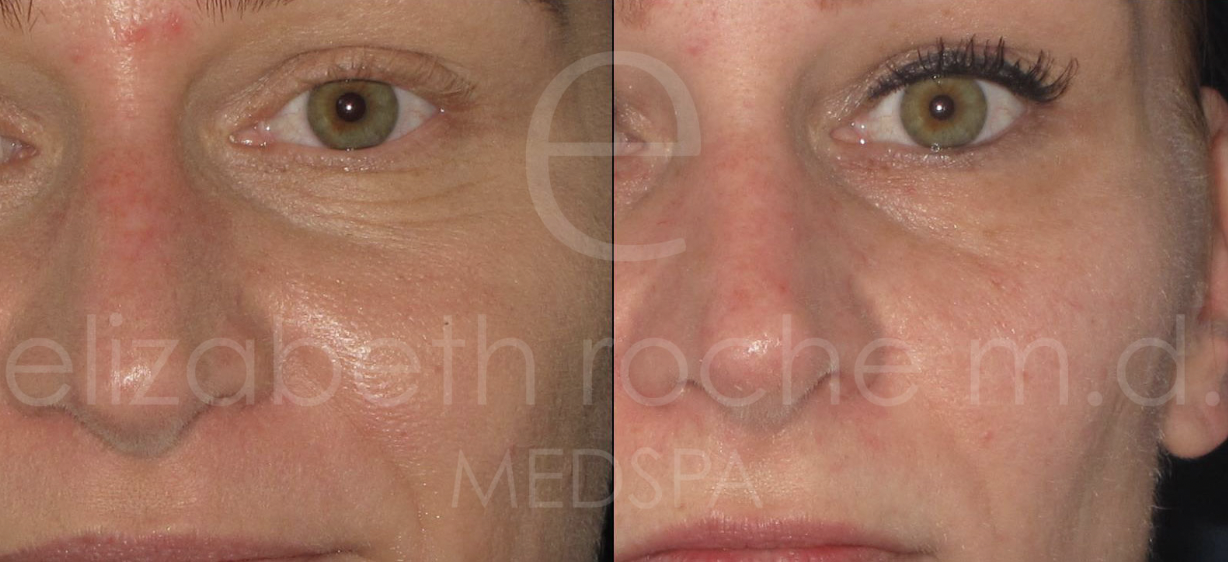
See more of my before and after results here.
3. Biostimulatory Injections
What is it? Biostimulators are compounds injected directly into the dermis to stimulate collagen and elastin production for volume restoration and moderate to severe wrinkles. Unlike injections of hyaluronic dermal fillers to provide volume in the tissues, these stimulate the body to promote new tissue growth and repair the lost volume in a natural way.
There are several different available bio-stimulatory injections approved by the FDA, including Radiesse, Sculptra, and PDO Threads.
Radiesse is an injectable that has calcium hydroxylapatite (CaHA) in a gel form which stimulates the production of collagen and also provides scaffolding at the injection site. CaHA is a mineral-like compound found naturally in the body in bones and teeth. Radiesse provides instant skin-lifting results and lasts about 15 months in total.
Sculptra is an injectable made out of poly-L-lactic acid (PLLA) to stimulate collagen by stimulating the body’s natural healing process. PLLA is a synthetic, non-toxic material that gets absorbed into the body over time. It is what dissolvable stitches are made out of, and is also the same material used in thread lifts. Sculptra is intended to be used over a series of injections to achieve lasting results for up to two years.
How does it work? Radiesse and Sculptra both stimulate the rebuilding of the collagen matrix in the dermal layer. The major difference is the compound found in the injections. The CaHA gel provides a structure that not only promotes collagen production at the injection site, but it also provides for lost volume. Sculptra uses the body’s innate inflammatory response to produce more collagen.
What is the procedure like? Radiesse requires one session, while Sculptra may require 3 sessions over a period of 3-4 months. Radiesse gets inserted deeper into the face, while Sculptra is injected subdermally. Both have short-lasting side effects that may include redness, swelling, bruising, itching, and mild pain for the following 24 hours.
What are the results? Radiesse results are immediately noticeable and can last over a year. Sculptra results are gradual and cause a natural-looking increase in volume after a few weeks. The results for both Radiesse and Sculptra can last over two years
Where can this be used? Both Sculptra and Radiesse can be used in the temples, midface, jawline, and lower face. Hyperdiluting either product allows it to be used in thinner areas such as the neck and decolletage.
Who is a good candidate? Those suffering from sagging skin and volume loss in their face are the best candidates for biostimulatory injectables. However, since Radiesse and Sculptra both physically penetrate the skin barrier, they are not advised for those who are prone to keloid formation.
Treatment After-Care:
After each of these treatments, it is important to take good care of your skin by using high-quality products to get the most out of the collagen-boosting response stimulated in your body and ensure your radiant skin lasts as long as possible. This means using products that will continue to feed the dermis and prolong collagen generation, as well as maintaining a strong moisture barrier to keep the skin plump and supple. From my product line –– which is packed with potent nutrients for your skin and contain no added fillers or toxins ––I recommend HylaPeptide Cream & Serum, Retinol-50 Night Serum, and NiaRclaim.
It is never too early to think about the health of your skin. As the largest organ in the body, it deserves regular maintenance and attention throughout its lifespan. By understanding the body’s natural aging process, you can prolong the vitality and youthfulness of your skin by implementing a science-backed approach for proven results. The treatments and products we offer at Elizabeth Roche Medical Aesthetic Office do not simply treat visible signs of aging, but protect the cellular structure and foundation that is critical for lasting skin health. You will not only walk out of our clinic looking like your most radiant self but also with clinically healthier skin.
To book a consultation for a personalized skin care evaluation, discuss your long-term health goals, and see which of these treatments may be the best benefit for you, Call Elizabeth Roche, M.D. MedSpa 201-505-1020.

